A 6-hour Aurora Borealis hunt on the Tagish Loop
I hadn’t been out on a good aurora shoot in a very long time, mostly due to camera issues. I didn’t go out at all last winter (!), and the results from a 6-hour shoot a couple of nights ago were so poor that I’ve now ordered what I need to fix the problem.
The aurora forecast put out by the University of Alaska Fairbanks is my main source of inspiration to have a sleepless night, and the forecast for Wednesday night gave me extremely high hopes for a night of full-sky aurora. That’s not what happened, but it was a good night of scouting locations for future shoots along a 240-km (150-mi) route, primarily along what we call the Tagish Loop – from Whitehorse down the Alaska Highway to Jake’s Corner, returning along the Tagish Road and South Klondike Highway.
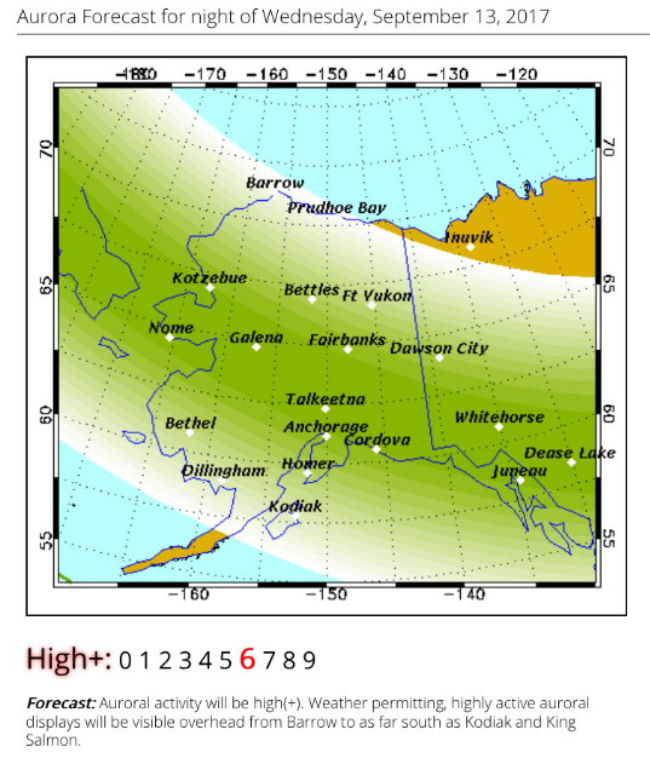
I left the house just after 11:00 pm, and my first stop was the Lewes Dam on the Yukon River. Within a few minutes of arriving, the aurora show began, with a small arc along the northern horizon. Most people shooting the aurora seem to go for special effects, enhancing the colours and/or dramatically lightening them. I’m still old school – the photos I post show you what the Northern Lights actually look like.
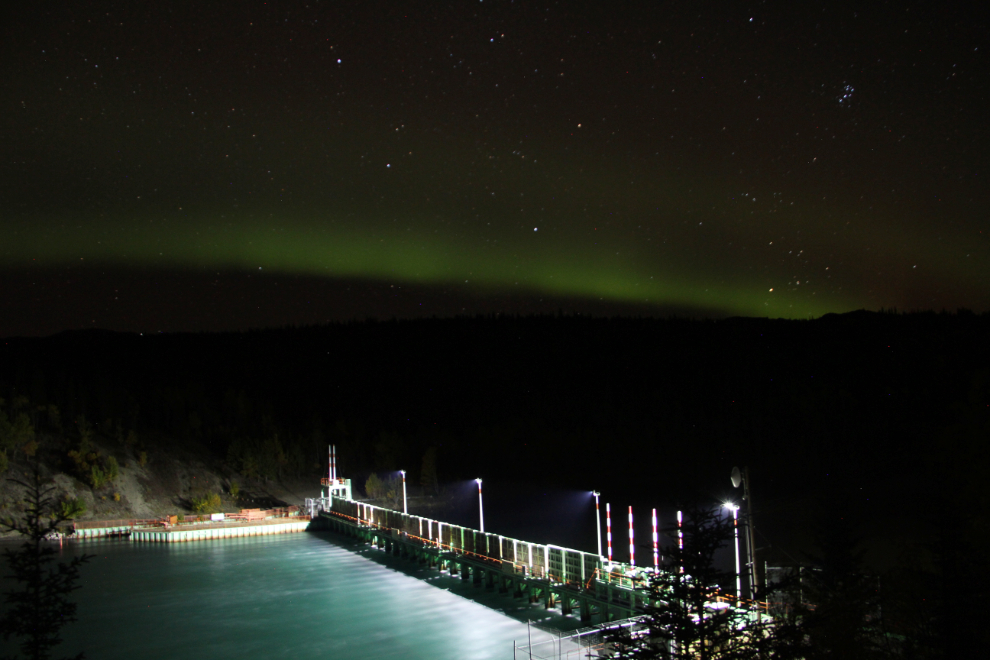
Continuing along the Alaska Highway, my next stop was at the M’Clintock River Bridge at Marsh Lake. I stayed there for a while, shooting both with and without traffic. Even this close to Whitehorse, very few vehicles are on the highway, and it takes a lot of patience to get one. I shot the next photo at 12:30 am. Noises in the bush here made me very nervous about bears and hurried my departure. With no snow on the ground, it’s very dark, and a headlamp is needed to move around.
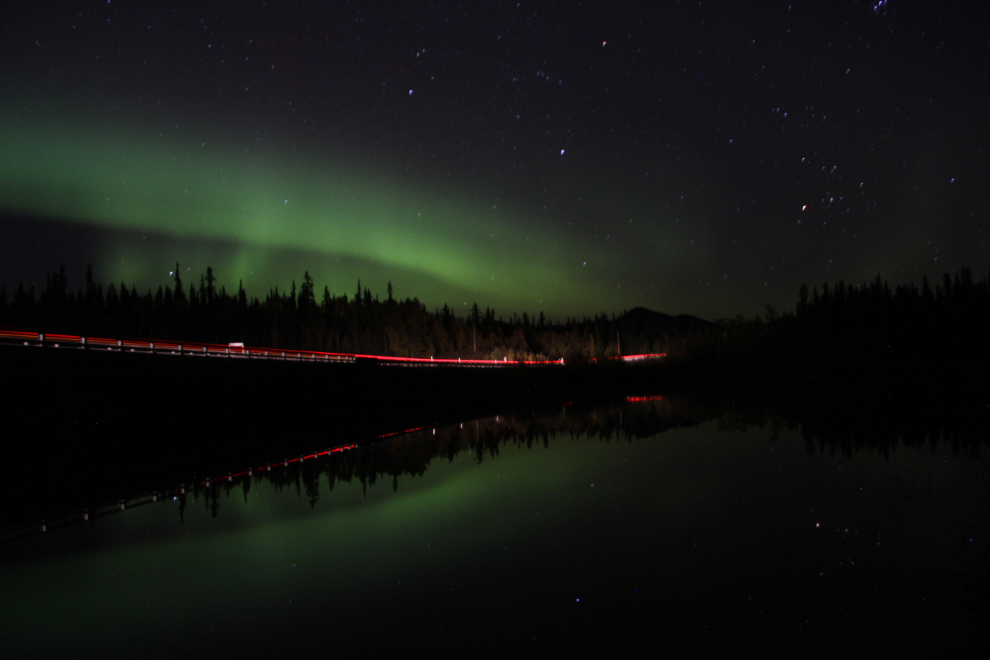
Because of the broad view, I had planned the Tagish Bridge to be one of my main shooting locations. The next photo was shot from the bridge at 1:47 am. During the 40 minutes or so that I was on the bridge, there was no traffic, no noise except a distant generator for a few minutes.
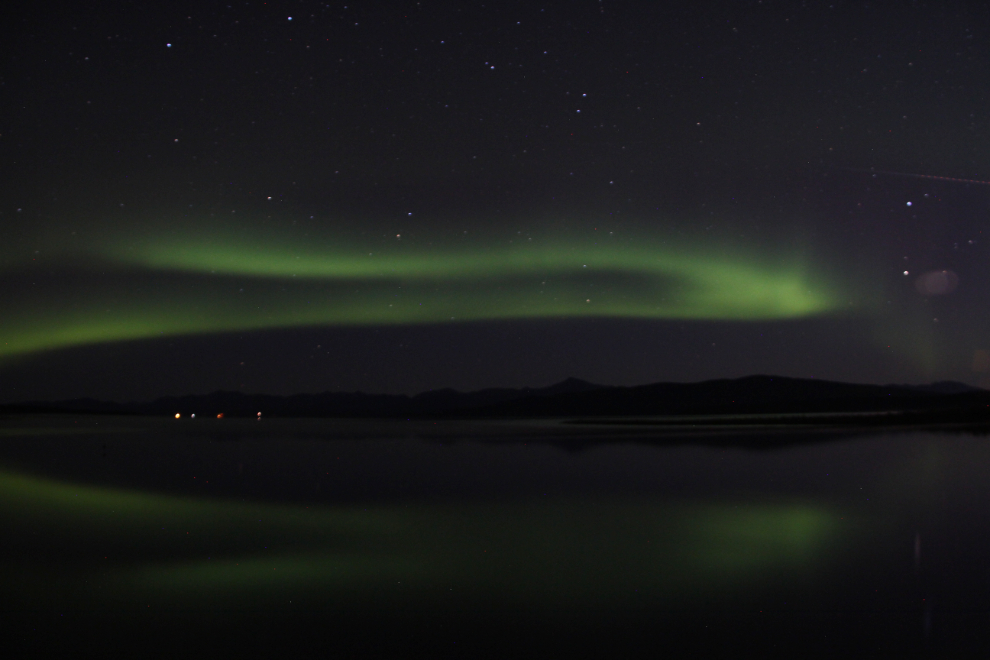
I put myself in the next photo, shot a couple of minutes before 02:00. I was already getting very frustrated with getting far too many focus fails from the 18-200mm lens that is pretty much always on my Canon 7D. Too many as in about 90% – this lens just doesn’t want to manually focus.

Next, I went to Carcross and then south along the South Klondike Highway to the Bove Island viewpoint. Well actually a bit north of the viewpoint, where trees are blocking the view too much now. Tourism or Highways really needs to do a bit of logging there. The next photo was shot at 02:45 – the moon had come up at about 12:45, just after I left the M’Clintock River Bridge.
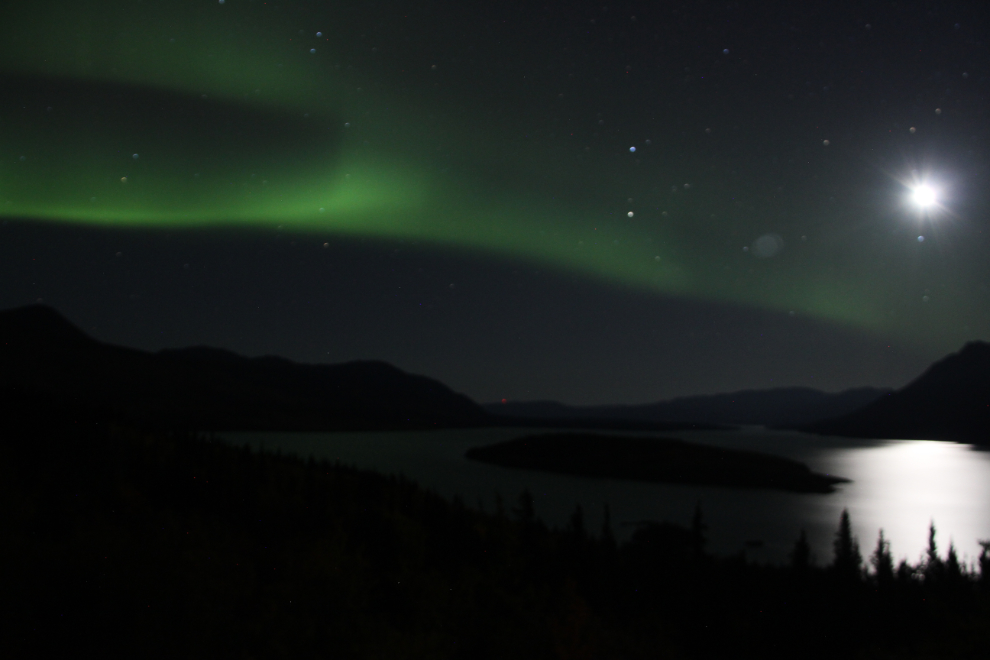
While I was at Bove Island, I could see a really strong auroral display in a narrow spot of sky to the north, just out of my photographable area. Timing and location have to come together for this to work. The 7 photos that I’m posting here were from the fairly brief strong displays that night, between which there were long periods of very faint aurora.
I spent quite a while on the beach at Carcross, but got nothing useable. It was a gorgeous night, though, with Lake Bennett calm and amazing stars – the Milky Way was as clear as I’ve ever seen it. I tried to get some star photos but none focussed properly.
Northbound towards home, I stopped at the Emerald Lake viewpoint to have a nap, but as soon as I got settled, the aurora burst into life again, so I moved down to the shore of the lake. Emerald Lake is the most-photographed lake in the Yukon, but it doesn’t look like this in many photos. It was now 04:20.
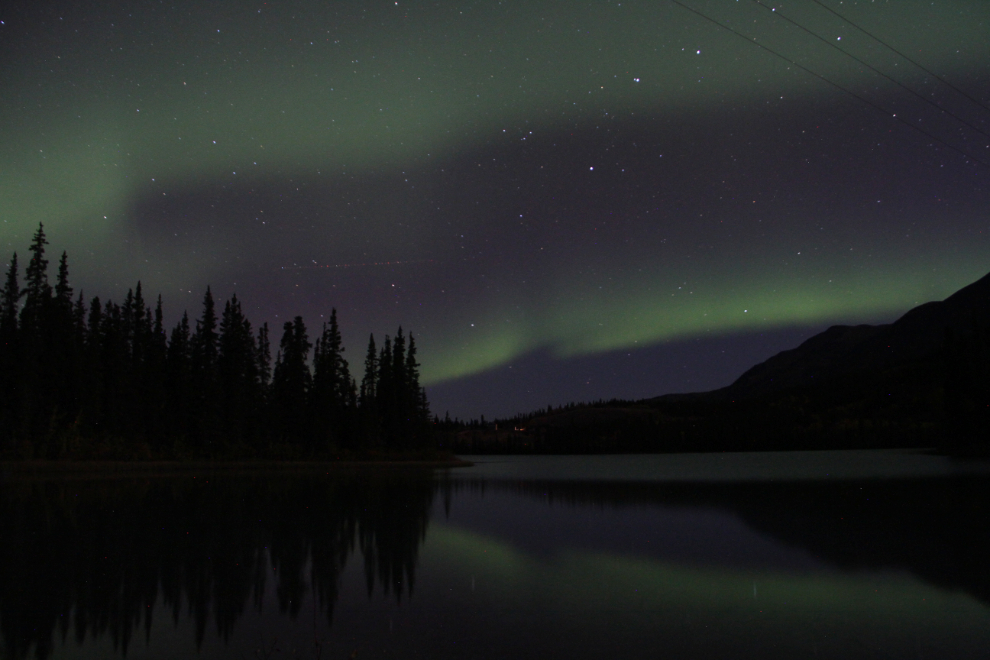
The final photo was shot from the Emerald Lake viewpoint, at 04:30.
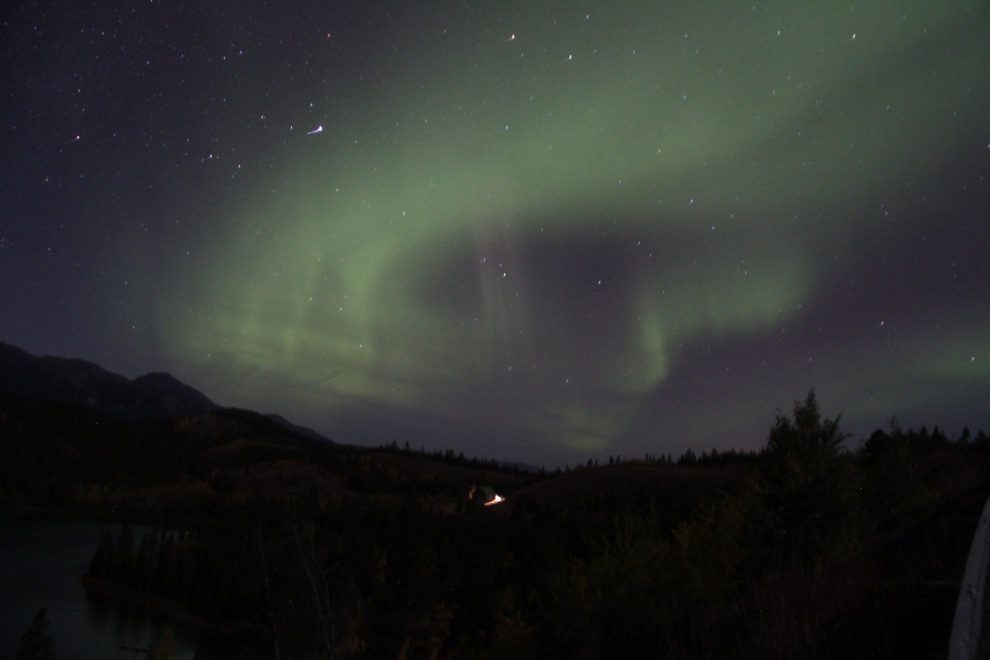
I went to bed for a couple of hours as soon as I got home just after 05:00. When I got up, the first thing I did was go through my photos. Seeing the number of focus fails, I then logged on o my Amazon account and bought a better aurora lens. A Canon EF-S 10-18mm f/4.5-5.6 IS STM lens is now on the way, and I expect to be doing many more aurora hunts this coming winter.